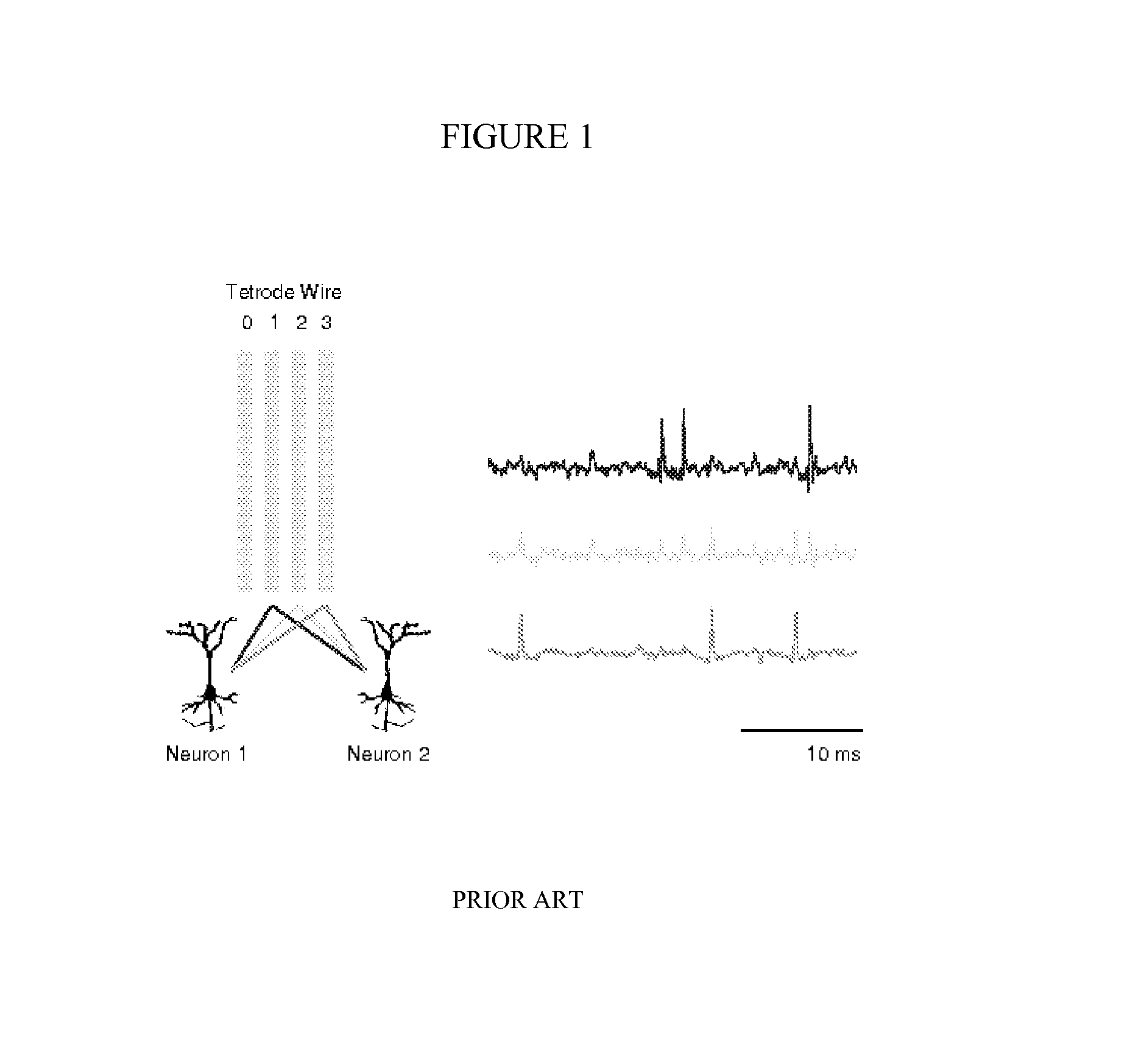Microfabricated neural probes and methods of making same
a neural probe and micro-fabricated technology, applied in the field of micro-electromechanical systems, can solve the problems of limited spatial resolution of micro-machined neural probes and more expensive probes than desired
- Summary
- Abstract
- Description
- Claims
- Application Information
AI Technical Summary
Benefits of technology
Problems solved by technology
Method used
Image
Examples
first embodiment
1. First Embodiment
[0051]In a first embodiment of the invention, the present inventors have developed a method to fabricate a neural probe which contains a plurality of nanoscale recording electrodes. Preferably, the recording electrodes have a width of 1 micron or less, such as about 0.1 to about 0.8 microns, form example about 0.3 to about 0.5 microns. It should be noted that while the electrodes preferably have a round cross section where the width of the electrodes refers to their diameter, they may also have polygonal or irregular cross section, where the width refers to the maximum width of the electrodes. The electrodes may have any suitable height, such as 6 microns or less, for example 2 to 5 microns.
[0052]Preferably, a distance between adjacent recording electrodes is 10 microns or less, such as 1 to 4 microns, for example. The probe electrode density is preferably about 1 / 10 nm squared to about 1 / 50 nm squared. The electrode width and spacing is designed to allow the prob...
second embodiment
2. Second Embodiment
[0062]The second embodiment provides a neural probe comprising a plurality of microfabricated recording electrodes located on a polymer base material. Preferably, the recording pads containing the electrodes are located on and / or are partially encapsulated in a flexible cantilever shaped polymer structure. The preferred polymer materials are SU-8 and parylene. However, other materials may also be used. The second embodiment also provides a method of making a neural probe which includes forming a polymer support structure and forming conductors encapsulated in the polymer support structure. The conductors electrically connect exposed electrically addressable metal pads to a plurality of recording electrodes to form the neural probe.
[0063]In a first aspect of the second embodiment, the electrodes are located on the SU-8 polymer material. SU-8 is a negative tone, near UV photo-resist. Its properties allow building s structure from 0.5 μm to 300 μm thick. The advanta...
PUM
 Login to View More
Login to View More Abstract
Description
Claims
Application Information
 Login to View More
Login to View More - R&D
- Intellectual Property
- Life Sciences
- Materials
- Tech Scout
- Unparalleled Data Quality
- Higher Quality Content
- 60% Fewer Hallucinations
Browse by: Latest US Patents, China's latest patents, Technical Efficacy Thesaurus, Application Domain, Technology Topic, Popular Technical Reports.
© 2025 PatSnap. All rights reserved.Legal|Privacy policy|Modern Slavery Act Transparency Statement|Sitemap|About US| Contact US: help@patsnap.com



